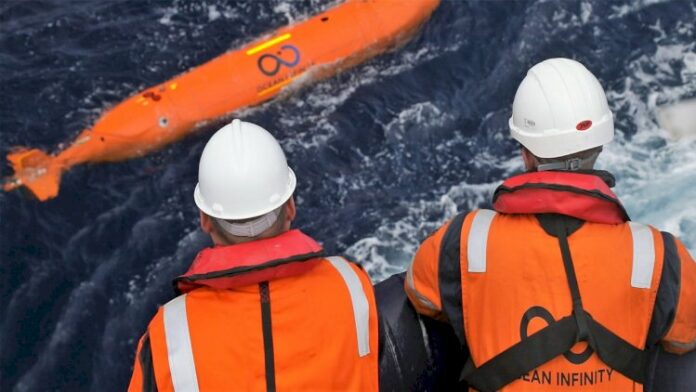NOAA’s Office of Ocean Exploration and Research and the ocean data and technology company Ocean Infinityoffsite link have announced a new agreement to develop deep-water autonomous technologies that can gather ultra-high-resolution ocean information.
The four-year Cooperative Research and Development Agreement (CRADA) between NOAA and Ocean Infinity will also focus on advancing telepresence or the transmission of ocean video and information in real-time to public and academic audiences as well as new data collection and processing methods to increase the value and relevance of deep-ocean data.
Neil Jacobs, Ph.D., acting NOAA administrator, said:
“This new partnership will help us more efficiently execute NOAA’s mission to advance unmanned drone systems and artificial intelligence to explore and map the United States Exclusive Economic Zone. Data and information about the ocean help our nation advance our Blue Economy, including maritime commerce, domestic seafood production, healthy and sustainable fisheries, coastal resilience, energy production, tourism and recreation, environmental protection and national security.”
The collaboration will support the recent Presidential Memorandum on Ocean Mapping in the U.S. Exclusive Economic Zone and Shoreline and Near Shore of Alaska and the goals announced at the November 2019 White House Summit on Partnerships in Ocean Science and Technology.
Sean Fowler, director of business development for Ocean Infinity, said:
“This is an exciting step for Ocean Infinity as we combine our leading deep-water exploration technology with NOAA’s prominent authority in ocean science. Perhaps greater than technology is the collaboration between leading engineers and scientists to ultimately improve our understanding of earth-ocean systems in remote environments."
Craig McLean, assistant NOAA administrator for research, added:
"Together, we’ll accelerate how we deliver important ocean information to those who need it most from ocean areas we know the least. This work will enhance our mission in science, operations and engineering.”
Only 43 percent of the 3.4 million square nautical miles of U.S. territory underwater is mapped to modern standards. Alan Leonardi, Ph.D., director of the NOAA Office of Ocean Exploration and Research, said:
“The NOAA-Ocean Infinity partnership will play a key role in helping NOAA reach its goal of fully mapping the U.S. EEZ and characterizing ocean environments to support their conservation, management, and balanced use.”



